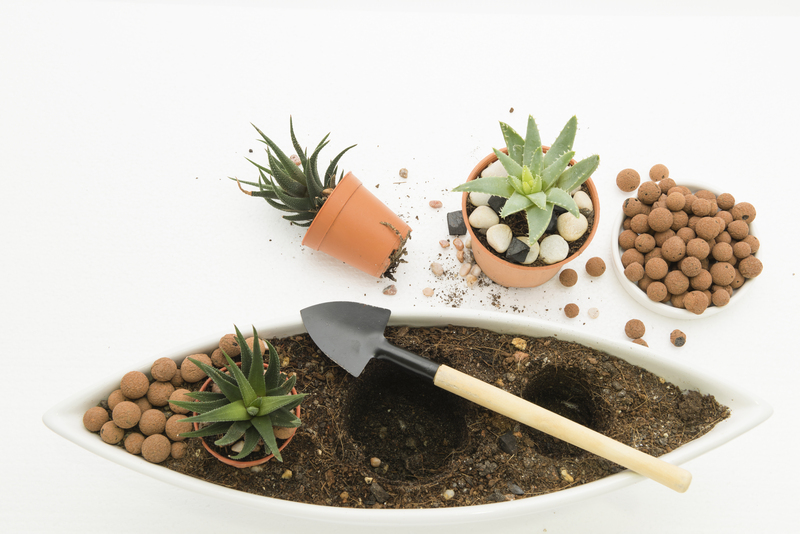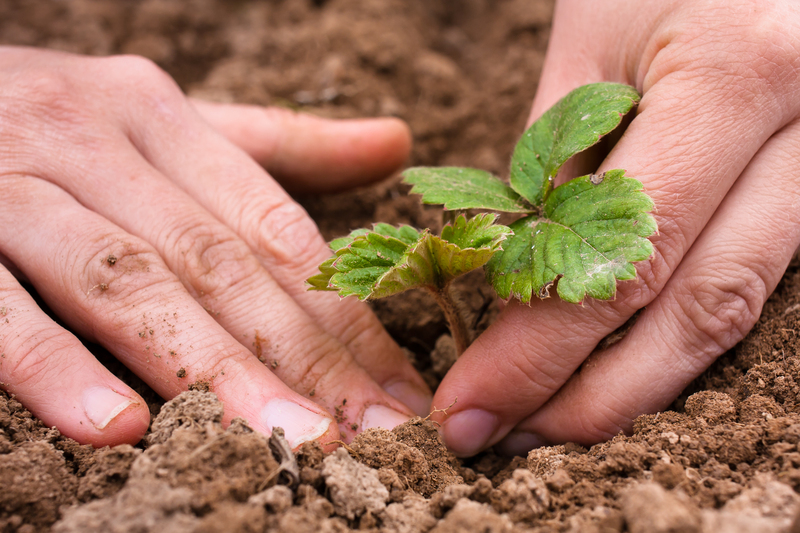Orchid Care: A Guide to Beauty and Health
Posted on 22/05/2025
Orchid Care: A Guide to Beauty and Health
Orchids are among the most captivating and diverse flowering plants in the world. Their exotic blooms and elegant forms make them a favorite among plant lovers and collectors, but the reputation for being tricky to care for often discourages beginners. If you've ever marveled at an orchid display and wondered how to keep these stunners thriving at home, this comprehensive orchid care guide is for you.

Understanding Orchids: More Than Just Pretty Flowers
Before delving into orchid health and maintenance, it's essential to understand the basic biology of these remarkable plants.
What Makes Orchids Special?
- There are over 25,000 species of orchids worldwide, making them one of the largest plant families.
- Orchids grow on every continent except Antarctica, thriving in diverse climates from rainforests to arid mountains.
- Epiphytes, meaning "on other plants," make up the majority of orchids. They anchor themselves to trees or rocks rather than growing in soil.
- Orchids have unique root systems and water needs compared to typical houseplants.
Their unique adaptations mean that orchid plant care isn't quite the same as caring for other household flora. Adapting to their preferences is the first step toward growing vibrant and healthy orchids.
Choosing the Right Orchid for Your Home
Some orchid varieties are easier for beginners, while others may require more advanced techniques and environments. Here are a few popular types:
- Phalaenopsis (Moth Orchid): The quintessential beginners' orchid, renowned for its resilience, long bloom period, and tolerance of household conditions.
- Cattleya: Famous for their large, fragrant, and brightly colored blooms, Cattleyas prefer brighter light.
- Dendrobium: Dendrobiums come in many shapes and sizes and are generally straightforward with the right care.
- Oncidium: Also known as "Dancing Ladies," these orchids delight with intricate sprays of flowers and thrive in bright, indirect light.
Select a species that suits your home's natural light, humidity, and temperature conditions for the best chance of success.
Lighting: The Key to Lush Orchid Blooms
How Much Light Do Orchids Need?
Lighting is one of the most critical factors in orchid health. The ideal amount of light depends on the species, but most household orchids (especially Phalaenopsis) flourish in bright, indirect light.
- South or east-facing windows are usually best for orchids.
- Avoid direct midday sun, which can scorch the leaves.
- Leaves should be a healthy, grassy green. Dark leaves often mean too little light; yellowish green can indicate too much.
- Supplement with grow lights if natural light is insufficient, especially during winter months.
Tip: Move your orchid around to find its sweet spot and observe how the leaves respond. This will help you optimize orchid care indoors for robust, beautiful growth and abundant flowers.
Watering Orchids: Finding the Perfect Balance
How Often Should You Water Your Orchid?
Correct watering is the cornerstone of healthy orchids. While most houseplants prefer evenly moist soil, overwatering is the number one killer of orchids!
- Let the growing medium dry slightly between waterings. For most orchids, this means watering every 7-10 days.
- Water thoroughly, allowing excess moisture to drain away completely. Never let your orchid sit in standing water.
- Check roots for clues: Silvery or white roots need hydration, while green roots indicate sufficient moisture.
- Use lukewarm, filtered water whenever possible. Avoid using softened or highly chlorinated water.
Signs of Overwatering and Underwatering
- Overwatering: Yellowing leaves, brown mushy roots, leaf drop, and persistent wet medium.
- Underwatering: Wrinkled or shriveled leaves, dry papery roots, droopy stems.
Understanding these watering principles is essential for effective orchid care and maintenance.
Humidity and Temperature: Creating an Orchid Oasis
Ideal Orchid Humidity Levels
Most orchids thrive when indoor humidity levels are between 40-60%. Homes, especially in winter, tend to be drier than this.
- Place a shallow tray of water and pebbles beneath your orchid pot to increase ambient moisture.
- Use a room humidifier if needed, particularly during dry spells.
- Misting can help but should not soak the leaves or crown; only mist lightly in the morning.
Temperature Preferences
- Daytime: 65-80?F (18-27?C)
- Nighttime: 55-65?F (13-18?C)
- Phalaenopsis and most household orchids enjoy typical room temperatures but may require a slight drop at night to trigger blooming.
Orchids appreciate stable temperatures and despise sudden drafts or direct blasts of heat from vents.
Potting Medium and Repotting: Giving Roots Room to Breathe
Choosing the Right Orchid Potting Mix
Unlike other houseplants, orchids don't grow well in regular soil. Instead, they need specialized media that allow their roots to breathe and anchor themselves.
- Bark-based mixes are common and mimic the tree surfaces many orchids would cling to in nature.
- Sphagnum moss, perlite, coconut husk, charcoal, and other chunky, fast-draining materials are often mixed in.
- Choose a mix specified for orchids, ensuring adequate aeration and drainage.
When and How to Repot Orchids
Orchids generally need repotting every 1-2 years, or when:
- The potting medium breaks down and becomes compacted.
- Roots are spilling over the edge of the pot.
- New growth is struggling or blooms are minimal.
Steps for repotting your orchid:
- Wait until your orchid finishes blooming.
- Gently remove the plant and trim any dead or mushy roots with sterilized scissors.
- Shake off the old potting material and repot using fresh, moist orchid mix.
- Use a pot with drainage holes to avoid waterlogging.
Orchid Feeding: Fertilizer for Healthy Growth
Orchids, while delicate in appearance, are relatively low feeders. Over-fertilizing can do more harm than good.
- Use a balanced fertilizer (20-20-20) or one formulated for orchids. Dilute to one-quarter strength unless otherwise specified.
- Feed your orchid every 2-4 weeks during active growth (spring to fall).
- In winter, reduce or stop feeding; orchids tend to go semi-dormant.
- Flush the pot with plain water every few months to prevent salt buildup from fertilizers.
Orchid Pruning and Grooming
- Remove wilted flowers and yellowing leaves to maintain plant health and visual appeal.
- After blooming, cut the flower spike back to the nearest node or the base, depending on the species, to encourage new blooms.
- Always use clean, sterilized scissors or pruning shears to prevent disease transmission.
Regular grooming not only keeps your orchid beautiful but also prevents the spread of pests and diseases.
Common Orchid Problems and Solutions
Pests
- Mealybugs, aphids, spider mites, and scale are the most frequent orchid pests.
- Remove pests by wiping leaves with mild soapy water or using an organic insecticidal spray.
- Keep new orchids isolated for a few weeks before introducing them to your collection to prevent infestations.
Disease Prevention
- Provide good air circulation around plants to prevent fungal and bacterial diseases.
- Do not let water sit in the leaf crown, as this encourages rot.
- At signs of black spots, mushy roots, or foul odors, trim off affected parts and apply a fungicide if necessary.
*Resolving issues quickly is crucial for maintaining the beauty and health of your orchid collection.*
Encouraging Reblooming in Orchids
A healthy orchid can bloom repeatedly with the right conditions and care. Patience is essential, as many orchids require a rest period before producing new flowers.
- Give your orchid a slight drop in nighttime temperature for a few weeks to encourage reblooming.
- Make sure it receives sufficient bright, indirect light and proper feeding.
- Do not overwater or overfeed during the resting phase.

Frequently Asked Questions About Orchid Care
Why are my orchid's leaves turning yellow?
Yellow leaves can be a sign of overwatering, too much direct sun, or natural leaf shedding. Check your watering routine, light exposure, and overall plant health.
How long do orchid flowers last?
Phalaenopsis blooms can last 2-4 months, while other varieties vary from a couple of weeks to two months. Proper orchid plant care can help extend the blooming period.
Can orchids be grown outdoors?
Many orchids thrive outdoors in tropical or subtropical climates. In cooler areas, bring them inside before temperatures drop below 55?F (13?C).
What should I do with my orchid after it finishes blooming?
Trim the flower stalk back, reduce watering and feeding, and provide a rest period until new growth appears. The plant will rebloom with proper care.
Conclusion: Orchid Care for a Lifetime of Beauty
Cultivating orchids is a fulfilling journey. With the right approach, you can transform your living space into a haven of floral elegance and health. Remember, understanding your orchid's needs -- from light and water to humidity and feeding -- is key to unlocking years of spectacular blooms and vibrant foliage.
Stay observant, patient, and never stop learning. The beauty and health of your orchids will reward your attention with an ever-evolving display of nature's artistry. If you're ready to enjoy the elegance of orchids in your own home, bookmark this care guide and embark on a remarkable botanical adventure!

